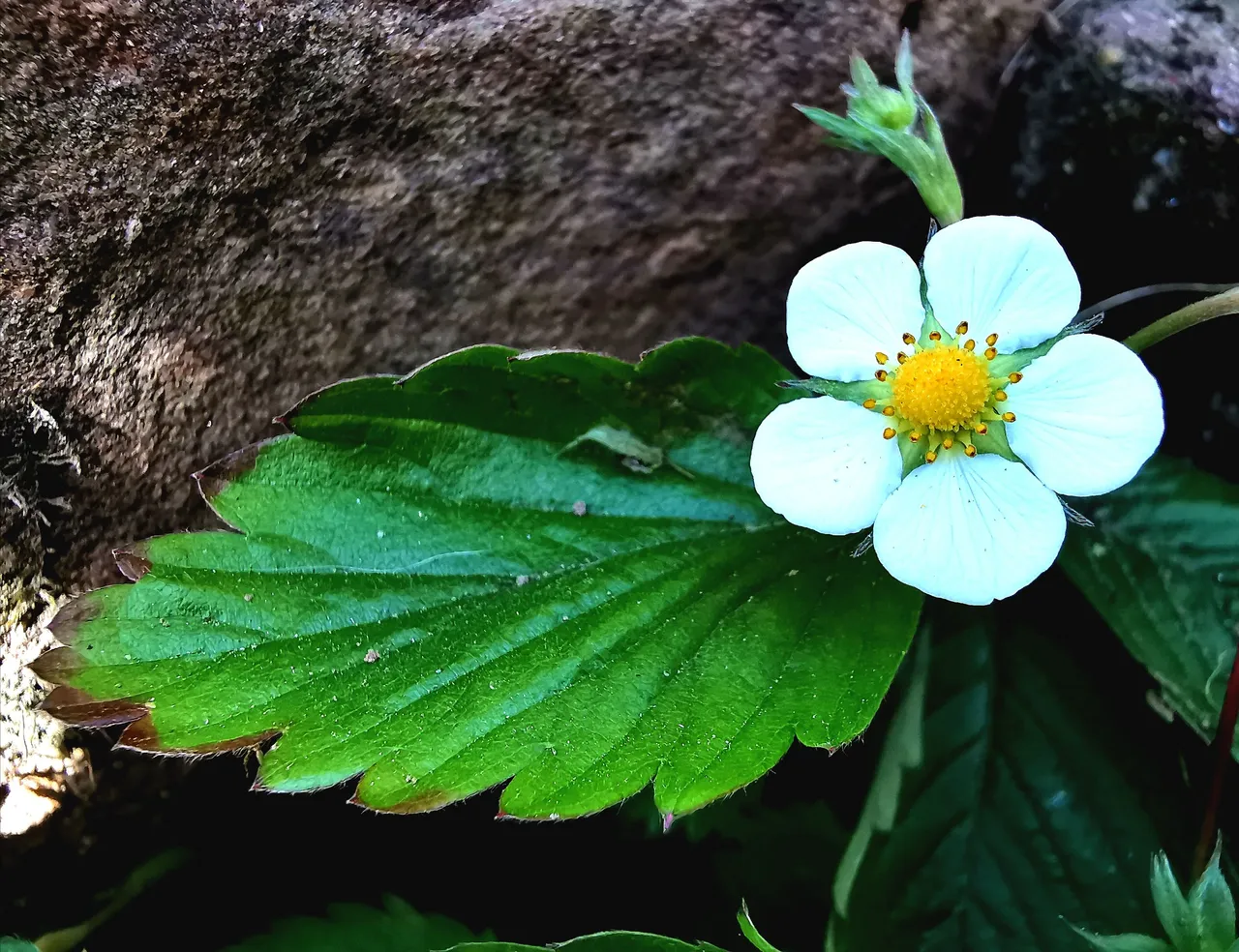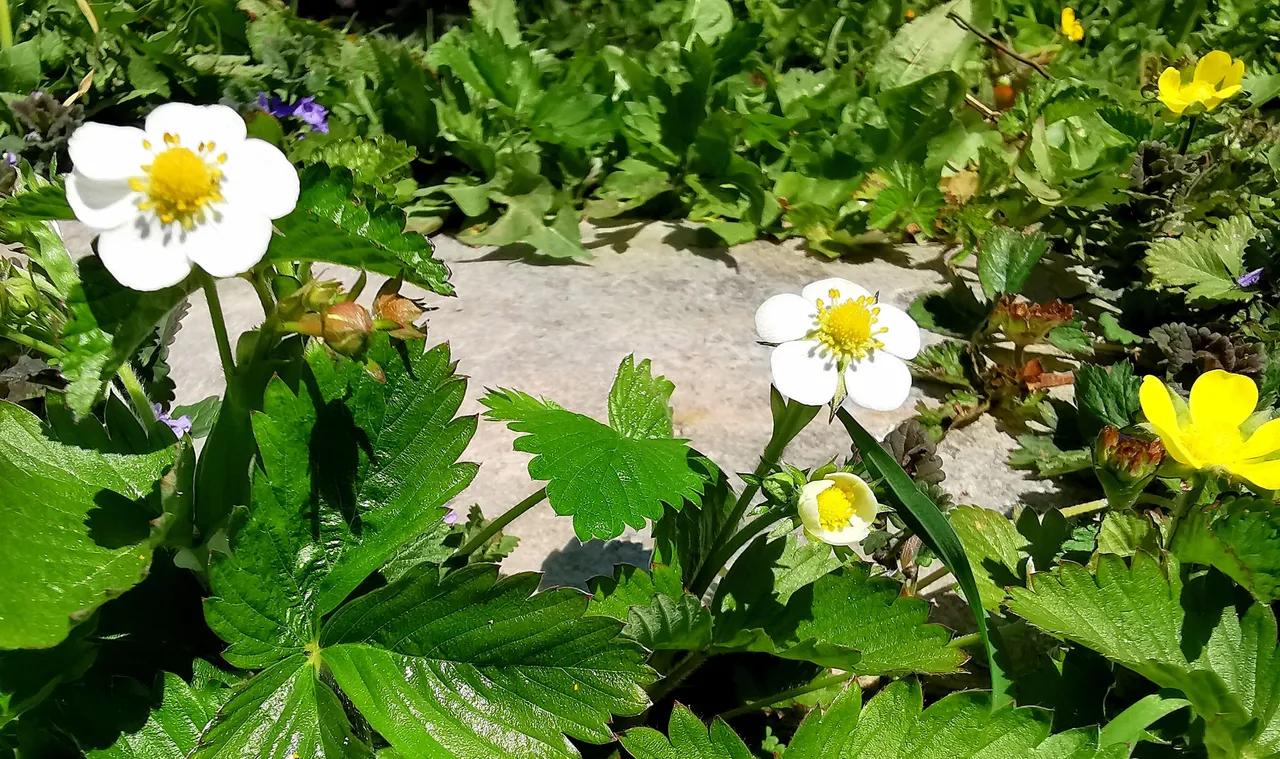Wild Strawberry - Fragaria vesca

Recently I have been taking a closer look at the wild strawberries growing around the house.
Not only have I been able to harvest the little, sweet strawberries many times the last year, but I also paid a little more attention to the whole plant this year.
The wild strawberry (Fragaria vesca) is a plant on which 14 wild bee species collect their pollen. It blooms from the beginning of April to the end of May.

The flower is white and rich in nectar and pollen. That is why the wild strawberry is so attractive for wild bees, even though it is said to have a nectar and pollen value of 1.
The scale ranges from 0 to 4, with the number 4 standing for the highest value (0 = none, 1 = low, 2 = medium, 3 = good, 4 = very good). The numbers given can only be understood as guidelines as the value of a nectar source plant depends on different circumstances.
Nonetheless the wild strawberry is said to contain 26 - 31% of sugar, which could be an indicator why bees like them.

Even though the scale in nectar and pollen is low, it doesn't mean it is a less valuable nectar source plant.
You can have a plant that is high in value but rarely occurs on the site on the one hand, but another plant with low value which is often represented on the same site on the other hand.
That makes the low value plant more valuable than the higher one.
See, the indicator doesn't necessarily mean something bad. A value 1 nectar source can become the main source and therefor the more valuable.

The wild strawberry is an important plant during the spring time, where bees and other insects can feed on.
Especially bees need a constant grow off nectar source plants throughout the year in order to grow a healthy brood and become a strong hive.
The availability of nectar source plants should be seamless to produce constantly honey over a year.

As I mentioned in my first post we have sown bee friendly plants. The wild strawberry is now growing in a lot of places and plentiful around our rental house.
I let them grow even on the stairs and to see them makes me happy, knowing that in the best case not only bees and insects are benefiting from it, but I may be able to harvest as much, if not more, strawberries this year than the last.

So if you have wild strawberries growing leave them as a good pollen source for the bees and a tasty fruit source for you.
The leaves can be used to make a tea out of it, which is said to help with diarrhea and gout. If you like to take a look at them click here.
The wild strawberry likes to grow in shady, damp areas with a little bit of sun.

I am not sure why, but lately I see myself interested in bees way more than I have before.
Maybe because I see the urgency in preventing most insects from extinction as they are correlated to our own survival.
Fighting for more awareness seems like a fight David vs. Goliath, because the industries are giving a shit about this topic. They only care for the profit but humanity is running out of time.
And not only in 50 years or so, if we make it 10 more years I'd be surprised, measured on the destruction that is taking place all over the world.
Open your eyes and hearts people, we are at the turning point.

